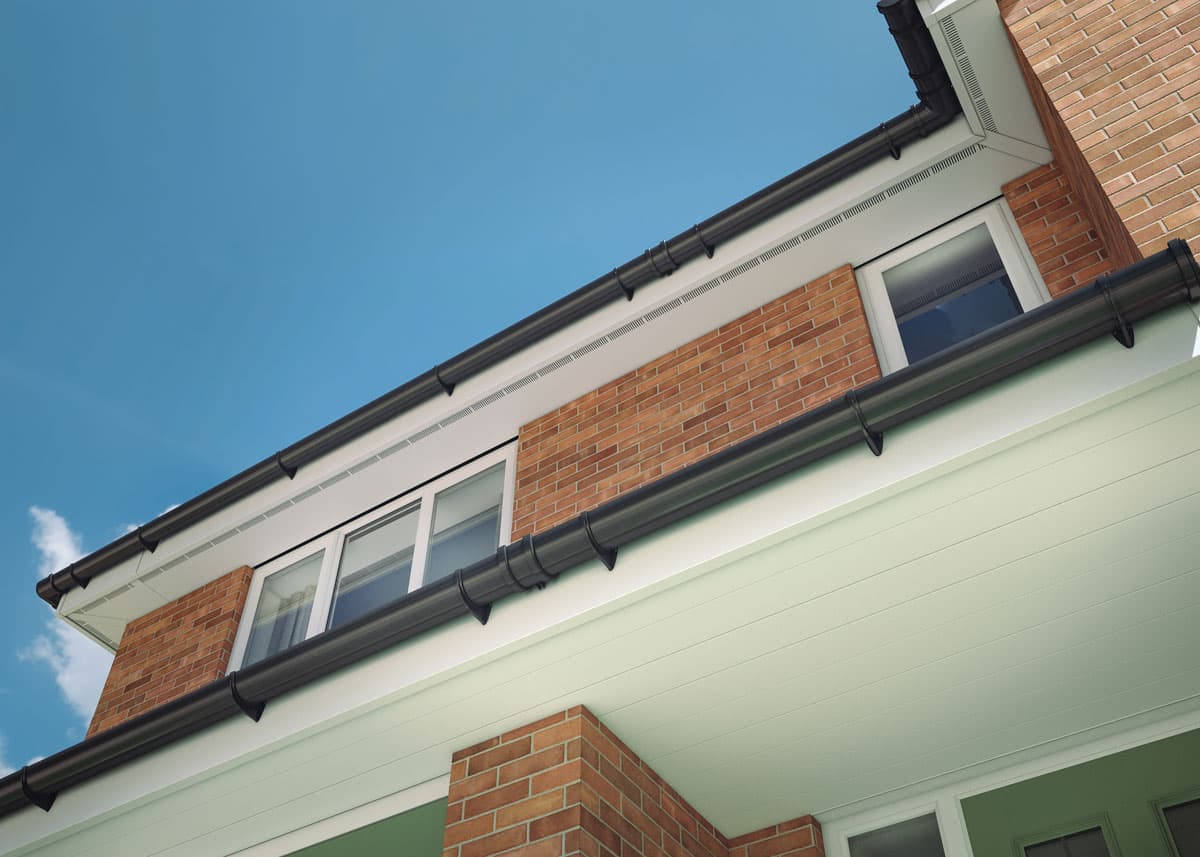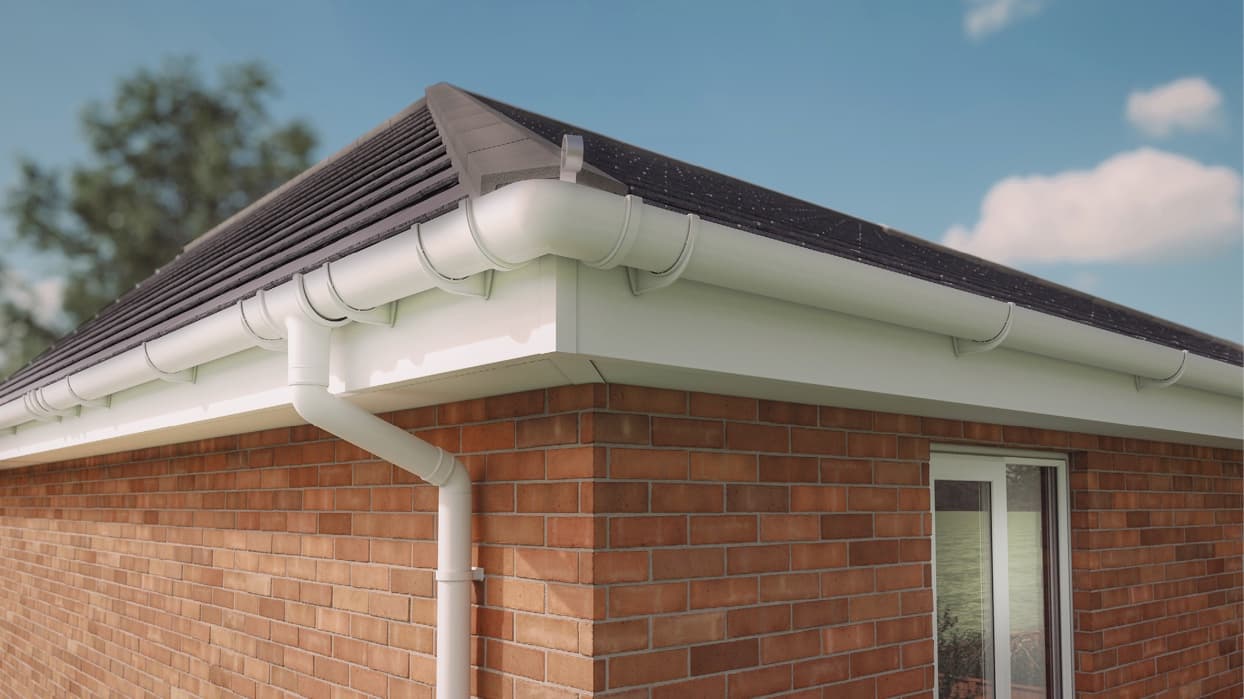Fascias & Soffits
Traditional timber fascias and soffits require a lot of attention to keep them looking good. If neglected, they can rot and splinter and over time become less effective at protecting your home from the elements. uPVC fascias and soffits are the ideal alternatives.
Available in a wide variety of sizes and styles, from smooth plain to textured wood effect, our range of high-quality uPVC fascias and soffits are easy to install and even easier to maintain. Requiring no expensive or time-consuming treatments to protect them from the weather, uPVC fascias and soffits are a durable, long-lasting alternative to timber.




Explore our extensive range of soffits and fascias
At Saltire, we offer a wide range of quality fascia capping and full replacement boards in a variety of sizes, from 9mm and 16mm to our jumbo 22mm board - so you are sure to find a fascia board that perfectly suits your home.
Our uPVC soffit range features general-purpose boards, hollow soffit boards, and pre-vented soffits, so regardless of what finish you want, we can help you achieve it.
All our soffit and fascia ranges come with lengthy guarantees, providing you with the peace of mind that you are buying a quality product from a knowledgeable, trustworthy company.
Visit your local Saltire branch today and talk to our expert, friendly team about your fascia and soffit requirements.
Fascia and Soffit FAQs
What is a fascia board? What is a soffit board?
A uPVC fascia board is a long, straight board that runs along the lower edge of the roof where it meets the outer walls of the house. It is responsible for supporting the lower edge of the bottom row of roof tiles, as well as providing protection to the roof rafters and carrying the guttering. A uPVC soffit is a flat board that is tucked away under the fascia board. It covers the roof overhang from below and protects the exposed part of the roof between the external wall and the fascia.
What colour fascia should I choose for my home?
As uPVC fascias and soffits are designed to last and keep their looks for a long time, it is important to choose the right colour for your home the first time. To help you make this decision, take a step back and really look at your home. Consider the colour of the bricks, window frames and door frames. What colour would complement these features? If you’re still unsure, speak to a local expert who will be able to guide you in the right direction.
How do you install fascias?
Framing out and preparation are key, whether you are replacing an existing fascia or installing a PVC fascia in a new build. Rafters must be at a maximum of 600mm, soffit bearers must be installed, and gable ladders used to provide adequate fixing for the fascia board. You can now start to install your PVC fascia. Firstly install your soffit boards. Then choose the appropriate height of the Jumbo board before fixing the fascia to each rafter end.
How do you measure for fascias and soffit boards?
Simple linear measurements can be made at ground level with tape – this will give you the total meterage from which you can calculate the number of boards required and attempt to make the best use of any off-cuts. Gable ends and bargeboards are a little trickier as they are on the incline of the roof, so it may be safer to ask for advice from a professional when determining this measurement – it is, however, important to count the number of joints and corners required. Most are single-ended (300mm) but some are double-ended (500mm) and can provide two single trims if the fascia is less than 250mm. Soffits also need a soffit joint trim which can be cut to suit the soffit width. You will also need to measure the fascia and soffit board width/depths – remember the soffit may be resting on the top brick course/window head so allow at least 25mm – 50mm for this and about 10mm to locate in the soffit groove of the fascia too.
What is the difference between full replacement boards and capping boards?
Full replacement (16mm -20mm thick) requires the removal of all existing timber boards before fixing the replacement board to the structurally sound rafter ends or suitable packers fixed to the sides of them. Refurbishment or capping boards should be fixed to good quality, existing timber boards or newly introduced backing boards (min 12mm marine ply). Never cover over rotten timber - cut out any suspect areas and replace with treated timber or replace the full length with a ply backing board.
What are the different types of soffit boards?
There are two main types of uPVC soffit board, plain and woodgrain. Plain uPVC soffit boards are usually available as general purpose; hollow, a lightweight and versatile board; and vented, which allows air to flow through the roof space preventing dampness. These plain soffit boards come in a range of colours from traditional white and black, to the more contemporary anthracite grey. Woodgrain uPVC soffit boards are designed to imitate real timber and are also available as general-purpose, hollow and vented. You will be able to choose from a variety of tones, from natural browns to modern greys. Whether you choose plain or woodgrain, there is a uPVC soffit board to perfectly suit your style of home.

